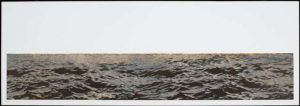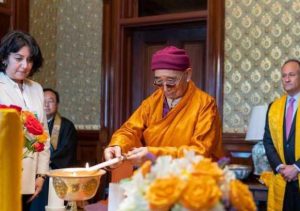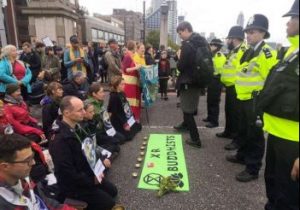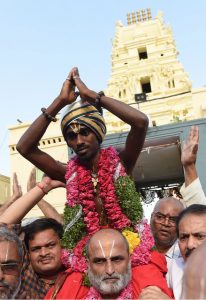Boṅgabhūmi is a toponym for the Bengali region where Bānlā, the Bengali language, is spoken by the majority of the population. From a geo-cultural standpoint, Boṅgabhūmi refers to a unified territory that encompasses modern-day Bangladesh and West Bengal in India. The term Boṅgabhūmi comprises two words: “Boṅga” and “bhūmi.” Boṅga refers to Bengal [unified Bengal], while bhūmi signifies “land” or “territory.”

Since the time of the historical Buddha, Boṅgabhūmi has been recognized as a historically significant region due to the early Buddhist transmission that took place there. According to the Aṅguttara Nikāya, there were 16 major states (soḷasa mahājanapadā) where the Buddha and his immediate disciples left lasting imprints of the Dharma. Among the 16, Magadhā was one of the most prominent and prosperous regions, stretching from Paṭalipūtra (present-day Bihar in northern India) to Baṅga (present-day West Bengal in India, and modern Bangladesh). As such, Buddhism has left an unmistakable historical mark on Boṅgabhūmi’s landscape, especially in Bangladesh.
The local Bengali communities believe that the Buddha visited Bangladesh on several occasions. The Buddha and his disciples allegedly rested at Cakraśālā (located in Patiya Subdistrict of Chattogram Division) for a few days on their missionary trip to Arakan (modern Myanmar). While there, the Buddha regularly practiced walking meditation (Skt: caṅkrama) and delivered his teachings to local residents. The name Cakraśālā is derived from the Sanskrit term “caṅkrama,” which means “walking meditation” and reminds us of what the Buddha and his disciples did in this ancient region. To honor the Buddha and his imprints in Cakraśālā, a local ruler built a monument, Pharātarā Caitya, which is revered by devotees and followers to this day. (Shimul 2012, 155)
An important record, this time from a travelogue from the famous Chinese pilgrim and Buddhist scholar Xuanzang (602–64 CE), was unearthed while exploring the historical Buddha’s footprint in Boṅgabhūmi. Xuanzang noted that the Buddha taught for three months in Puṇḍravardhana, which is now Bogra District, part of Bangladesh’s Rajshahi Division. According to the folklore of Puṇḍravardhana, the Buddha also attended the wedding of Sumanā, the daughter of Anāthapiṇḍada, a wealthy benefactor of the Buddha, and her husband, who was from ancient Puṇḍravardhana. Xuanzang further noted that the Buddha spent seven days in Samatata (the present-day Dhaka, Sylhet, Barisal, and Chattogram divisions of Bangladesh). (Saranapal 2021, 403–4)
The Buddhist transmission in Boṅgabhūmi was initiated by the Buddha and continued for the next thousand years, as evidenced by the ruins that still exist today. Emperor Aśoka (304–232 BCE) spearheaded the spread of Buddhism throughout his empire and beyond. While Aśoka altruistically constructed 84,000 stūpas and vihāras across his empire, he further supported the construction of additional stūpas in Boṅgabhūmi, which can be seen in Bangladesh’s southern region. As an outgrowth of his dedication, Aśoka constructed Raṅkūt Banāśrama Bihāra of Rāmu (in Cox’s Bazar, Chattogram Division), where he preserved the Buddha’s relics.
Later on, King Candrajōti, an ancient ruler of the Ārākān region, constructed a Buddha image at Raṅkūt Banāśrama Bihāra in 308 BCE. With the support of King Candrajōti, the Buddha’s relics were preserved within the head of a 182-centimeter statue of the Buddha, which was built from white stone. (Sanjoy 2021, 49–50) From the inception of Dharma transmission at Raṅkūt Banāśrama Bihāra to the present day, Buddhists in Bangladesh have commemorated Chaitra Songkrāntī, the last day of the Bengalī lunar calendar, to pay their respects to the Three Treasures and to celebrate Buddha Pūrṇimā (or Vesak). (Shimul 2012, 158)
More than 2,600 years have passed since Buddhism was introduced in Boṅgabhūmi, and the Buddhists of Boṅgabhūmi are considered to be one of the earliest Buddhist-based ethnic societies. In modern-day Bangladesh, about a million people identify as Buddhists. They have maintained their religion and belief in Buddhism despite experiencing enormous hardships from foreign invasions, colonialism, and postcolonial national dilemmas. The Buddhist transmission in Boṅgabhūmi is a powerful landmark in South Asian history that has contributed immensely to enriching Buddhist culture, literature, scriptures, and traditions.
References
Barua, Shimul. 2012. Bānlāra Baud’dha: Itihāsa-Aitihya O Sanskr̥ti. Chattogram: Anōmā Sanskr̥ti Gōsṭī.
Barua, Sukomol. 2017. Bānlādēśē’r Baud’dha: Itihāsa-Aitihya O Aitihya. Dhaka: Bangladesh University Grand Commission.
Bhikkhu Bodhi (trans.). 2012. Aṅguttara Nikāya: The Numerical Discourses of the Buddha. Boston: Wisdom Publications.
Saranapal Bhikkhu. 2021. “Reclaiming Bangladeshi Buddhist Heritage Forgotten by the Buddhist World,” Jyōtirmaẏa Dharmasen, 400–12.
Chowdhury, Sanjoy Barua. 2021. “Buddhist Transmission in Bangladesh: Past through Present.” Amitabha (Issue no. 20), 49-52.
Related features from BDG
From Vajrayoginī to the Land of Snow: The Legacy of Atīśa Dīpaṃkaraśrījñāna (982–1054)
Saṅgharāj Dr. Dharmasen Mahāthērō (1928–2020): The Life of the 12th Supreme Patriarch of Bangladesh
Walking into the Light of Wisdom: A Humble Tribute to the Legacy of Phra Khru Baitika Dr. Barton Yanathiro














